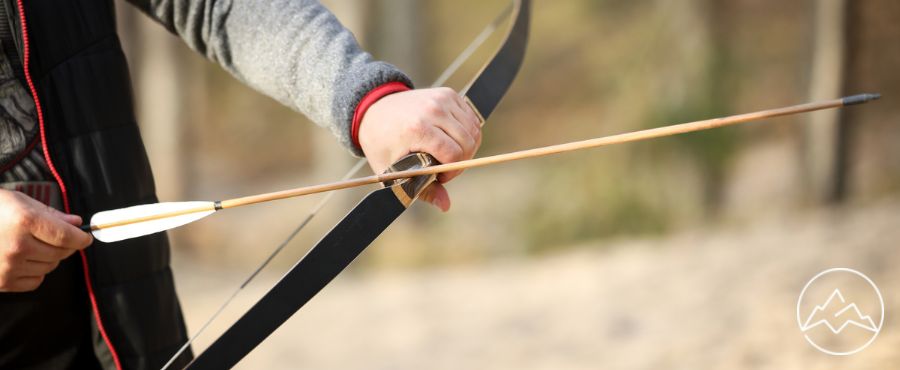Bowstring maintenance is a crucial aspect of ensuring optimal performance and longevity of a bow. One essential step in this maintenance routine is the waxing of the bowstring, a technique that is often overlooked but plays a significant role in enhancing the bow’s overall performance. Waxing not only extends the lifespan of the bowstring but also reduces friction, improves accuracy, and keeps the string supple, flexible, and strong.
Different types of bowstring wax, including beeswax, synthetic wax, and combination wax, offer various benefits. Beeswax deeply penetrates the fibers, reducing friction, while synthetic wax provides superior protection against wear and tear and is resistant to moisture. Combination waxes strike a balance between protection, longevity, and ease of use.
This article aims to provide a comprehensive guide on essential bowstring maintenance, focusing specifically on the waxing process. It will discuss the different types of wax available and provide step-by-step instructions on how to properly wax a bowstring, ensuring peak performance. By following these guidelines, archers can effectively prolong the life of their bowstrings and enhance their shooting experience.
Key Takeaways
- Waxing a bowstring is essential for extending its lifespan, reducing friction, and improving accuracy.
- Different types of bowstring wax offer various benefits, such as deep penetration, moisture resistance, and a balance of protection.
- The waxing process involves cleaning the string, applying wax in a thin and even layer, and working it into the fibers.
- Regular waxing and periodic replacement of bowstrings are important for optimal performance and longevity.
What is it?
Waxing a bowstring is a necessary step in bowstring maintenance, as it helps to prolong its lifespan, reduce friction, and improve accuracy. Regular waxing offers several advantages, including keeping the bowstring supple, flexible, and strong, which reduces wear and tear. Additionally, waxing reduces string vibration, leading to smoother and more consistent shots. When choosing the right bowstring wax, there are a few tips to consider. Beeswax is a popular option as it penetrates deep into the bowstring fibers, reducing friction. Synthetic wax, on the other hand, provides superior protection against wear and tear and is resistant to moisture. Combination waxes offer a balance of protection, longevity, and ease of use. By following these tips and regularly waxing the bowstring, archers can ensure optimal performance and longevity of their equipment.
Types of Wax
Different types of wax are available for treating the bowstring, including beeswax, synthetic wax, and combination waxes. Beeswax offers several benefits when used for bowstring waxing. It penetrates deep into the bowstring fibers, reducing friction and providing excellent lubrication. This helps to extend the lifespan of the bowstring and improve its overall performance. Beeswax also provides a natural barrier against moisture, protecting the bowstring from damage and ensuring its longevity.
When choosing the right type of wax for your bowstring, it is important to consider your specific needs and preferences. Synthetic wax is known for its superior protection against wear and tear, as well as its resistance to moisture. Combination waxes, on the other hand, offer a balance of protection, longevity, and ease of use. Ultimately, the type of wax you choose will depend on factors such as shooting frequency, environmental conditions, and personal preference.
Waxing Process
When performing the process of applying wax to a bowstring, it is important to begin by ensuring that the string is clean and free from any debris. This step is crucial as it allows the wax to adhere properly to the string and prevents any dirt or particles from becoming trapped within the fibers. Regular waxing of the bowstring offers several benefits, including extending its lifespan, reducing friction, and improving accuracy. However, there are common mistakes to avoid during the waxing process. One such mistake is overcoating the string with wax, which can lead to a gummy buildup and affect the string’s performance. It is recommended to apply a thin and even layer of wax and work it into the fibers using fingers, cloth, or scrap leather. This ensures proper distribution and penetration of the wax, resulting in a supple, flexible, and strong bowstring.
Frequently Asked Questions
How often should I replace my bowstring?
Bowstrings, like any other equipment, have a finite lifespan and should be replaced periodically to ensure optimal performance. To extend the lifespan of your bowstring, regular waxing is crucial. Signs that indicate it’s time to replace your bowstring include frayed or broken strands, nicks, cuts, or abrasions. These damages can affect accuracy and potentially lead to injury or damage to the bow. Proper maintenance, including waxing and timely replacement, will help maximize the lifespan of your bowstring.
Can I use any kind of wax on my bowstring?
When it comes to bowstring maintenance, it is important to use the appropriate wax to ensure peak performance. There are different types of wax suitable for bowstring maintenance, including beeswax, synthetic wax, and combination waxes. Beeswax penetrates deep into the bowstring fibers, reducing friction. Synthetic wax provides superior protection against wear and tear and is resistant to moisture. Combination waxes offer a balance of protection, longevity, and ease of use. These alternatives to traditional wax can effectively maintain the bowstring’s flexibility, strength, and accuracy.
Is there a specific technique for applying the wax to the bowstring?
Specific wax application techniques for bowstring maintenance involve cleaning the string prior to waxing and applying a thin and even layer of wax. It is important to avoid overcoating the string and to work the wax into the fibers using fingers, cloth, or scrap leather. The best types of wax for bowstring maintenance are beeswax, which deeply penetrates the fibers and reduces friction, synthetic wax, which provides superior protection against wear and tear and is resistant to moisture, and combination waxes that offer a balance of protection, longevity, and ease of use.
Can I use regular household wax for bowstring maintenance?
Using regular household wax for bowstring maintenance is not recommended. Specialized bowstring wax offers several benefits that regular household wax cannot provide. Alternative wax options such as beeswax, synthetic wax, and combination waxes are specifically designed for bowstring maintenance. These waxes penetrate deep into the bowstring fibers, reducing friction, providing superior protection against wear and tear, and resisting moisture. Using specialized bowstring wax ensures optimal performance, longevity, and protection for your bowstring.
What are the consequences of not waxing my bowstring regularly?
Neglecting regular waxing of a bowstring can have significant consequences. Without proper maintenance, the bowstring is more prone to wear and tear, reducing its lifespan and overall performance. Friction and string vibration increase, leading to less accurate shots and potential damage to the bow. Regular waxing is essential for bowstring longevity as it keeps the string supple, flexible, and strong. It is crucial to incorporate regular waxing into bowstring maintenance to ensure optimal performance and extend the lifespan of the bowstring.
Conclusion
In conclusion, waxing a bowstring is an essential step in bowstring maintenance to ensure peak performance and extend its lifespan. Different types of wax offer various benefits, such as reducing friction, providing protection against wear and tear, and resisting moisture. The waxing process involves cleaning the string and applying a thin and even layer of wax, working it into the fibers. While some may argue that waxing is time-consuming, the benefits it provides in terms of improved accuracy and longevity make it a worthwhile practice for bowstring maintenance.












